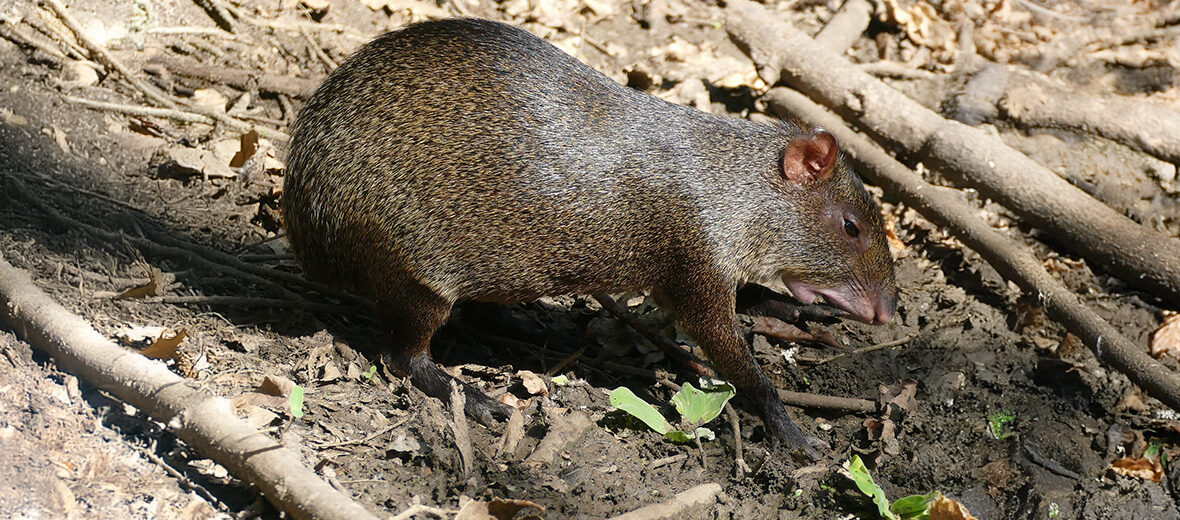
The Mexican agouti, aka Mexican black agouti, can be found in southern Mexico as well as far western and eastern Cuba. They prefer humid tropical rainforests, lowland evergreen forests, & secondary growth forests. Due to facing the threats of habitat destruction at the hands of deforestation from the logging industry, hunting, and trapping, these rodents are listed as Critically Endangered by the IUCN. There numbers are also decreasing.
First the Stats…
Scientific name: Dasyprocta mexicana
Weight: Up to 8.82 lbs.
Length: Up to 23.62 inches, plus up to a 1.18 inch tail
Height: Up to 9.05 inches, at the shoulders
Lifespan: Up to 13.1 years
Now on to the Facts!
1.) They were first discovered in 1860 in Veracruz, Mexico and described by Henri Louis Frédéric de Saussure.
2.) These rodents are both diurnal (active during the day) and crepuscular (active in both dawn and dusk).
3.) Mexican agoutis produce sharp nasal barks and stomp their feet as an alarm call before running to elude danger.
4.) Their diet consists of various fruits and new growth plants. Some of the foods they eat are almonds, avocado, black palm, Brazil nuts, citrus fruit, coconuts, corn, flowers, leaves, mango, melons, dry palm pyrenes, papaya, pineapple, queen palm, rice, roots, tomato, and invertebrates.
5.) They display scatter-hoarding behaviors, where they will gather large amounts of food (such as seeds) and dig holes up to 3.15 inches deep, place their gathered food into the holes, then cover the food up with dirt and leaf matter to hide it from others.
But wait, there’s more on the Mexican agouti!
6.) Mexican agoutis are monogamous (mate for life).
7.) Females undergo up to a 120 day gestation (pregnancy) that yields up to 2 young.
Did you know…?
Seeing as agoutis are rodents, they are subject to ever growing incisors. Their teeth have to be constantly honed and worn down to prevent overgrowth.
8.) Pups are born precocial (self sufficient) but will typically wean from their mother in up to 7 weeks. While weaning, the pups will often follow mom around and forage on the same food she eats.
9.) Known predators are birds of prey, cats, jaguars, and snakes.
10.) Agoutis serve a vital role in their ecosystem due to both seed dispersal and in hiding, and subsequently forgetting, seeds in the ground. Both of which aid in forest growth.
But wait, there’s still more on the Mexican agouti!
11.) Agouti meat is highly valued for its white, nutrient-rich, and flavorful qualities. Thus, they are often hunted to great extent.
12.) They have also been utilized as a source of bristles, leather, and skin, in some regions.
13.) Mexican agoutis are subsequently considered an invasive species in Cuba, where they were introduced and currently compete for food with the Desmarest’s hutia.
Now a Short Mexican Agouti Video!
This video talks about agoutis in general.
Be sure to share & comment below! Also, check out the Critter Science YouTube channel. Videos added regularly!
Want to suggest a critter for me to write about? Let me know here.
Some source material acquired from: Wikipedia & IUCN
Photo credit: Bernard Dupont




